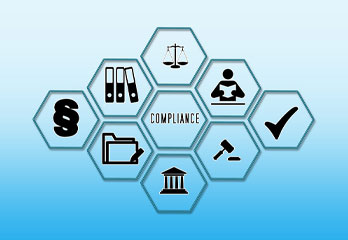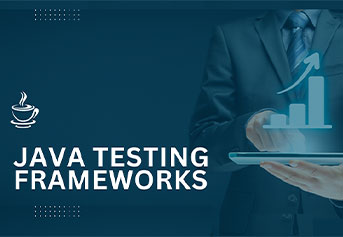In the fast-paced world of software development, Agile and DevOps methodologies have become indispensable. Both aim to improve productivity and deliver high-quality software faster. However, integrating and optimizing these processes can be challenging. This blog will explore four actionable tips to enhance your Agile and DevOps practices, ensuring smoother workflows and better outcomes.
Understanding Agile and DevOps
Before diving into actionable tips, it's crucial to understand what Agile and DevOps entail and how they complement each other.
Agile is a project management methodology that emphasizes flexibility, collaboration, and customer feedback. Agile methodologies, such as Scrum and Kanban, are designed to be adaptive, making it easier to respond to changes and deliver value incrementally.
DevOps, on the other hand, the goal is to shorten the development lifecycle and deliver continuous delivery with high software quality. DevOps promotes a culture of collaboration between teams that traditionally worked in silos, ensuring that software can be developed, tested, and released faster and more reliably.
Together, Agile and DevOps can transform your development process by promoting rapid iteration, continuous improvement, and a unified approach to building and deploying software.
1. Foster a Culture of Collaboration and Continuous Feedback
Agile and DevOps thrive on collaboration and continuous feedback. Building a culture that supports these principles is essential for their successful implementation. Encourage open communication across all teams and create an environment where developers, testers, and operations personnel work closely together from a project's inception to its delivery.
Actionable Steps:
Implement Regular Cross-Functional Team Meetings: These meetings can include daily stand-ups, sprint reviews, and retrospectives. They provide opportunities for team members to discuss progress, challenges, and solutions.
Utilize Collaboration Tools:Tools like Slack, Microsoft Teams, or Jira facilitate real-time communication and collaboration. They help teams stay connected, share updates, and resolve issues quickly.
Encourage Peer Reviews and Pair Programming:Peer reviews can enhance code quality by identifying issues early, while pair programming promotes knowledge sharing and improves team cohesion.
2. Automate Wherever Possible
Automation is a cornerstone of effective Agile and DevOps processes. It minimizes human error, speeds up repetitive tasks, and allows teams to focus on more strategic work. From continuous integration and continuous deployment (CI/CD) pipelines to automated testing and infrastructure as code (IaC), automation can significantly enhance efficiency.
Actionable Steps:
Set Up CI/CD Pipelines:Tools like Jenkins, GitLab CI, or CircleCI can automate the build, test, and deployment processes. This ensures that code changes are continuously integrated and deployed, reducing the risk of integration issues and accelerating the delivery of new features.
Implement Automated Testing: Frameworks such as Selenium, JUnit, or TestNG can automate various types of testing, including unit, integration, and end-to-end tests. Automated testing ensures that code quality is maintained and that issues are detected early in the development cycle.
Use Configuration Management Tools: Tools like Ansible, Puppet, or Chef can automate infrastructure provisioning and management. This allows you to manage and deploy infrastructure consistently and reliably, reducing the risk of configuration drift and human error.
3. Embrace DevSecOps for Security Integration
Security should never be an afterthought. Integrating security practices into your Agile and DevOps workflows—known as DevSecOps—ensures that security is built into every stage of the development lifecycle. This proactive approach helps identify and mitigate vulnerabilities early, reducing the risk of security breaches.
Actionable Steps:
Incorporate Security Checks into CI/CD Pipelines: Automatically scan for vulnerabilities at every stage of the pipeline using tools like Snyk, SonarQube, or OWASP ZAP. This ensures that security issues are identified and addressed before they reach production.
Conduct Regular Security Training: Regular training sessions can help your development and operations teams stay up to date with the latest security practices and threats. This ensures that security is considered in every decision and action taken.
Perform Static and Dynamic Code Analysis: Tools like Snyk and SonarQube can perform static code analysis to identify vulnerabilities in the codebase, while tools like OWASP ZAP can perform dynamic application security testing to identify runtime vulnerabilities.
4. Measure and Optimize Performance Continuously
Continuous improvement is a core principle of both Agile and DevOps. To enhance your processes, it's crucial to measure performance, analyze the data, and make informed adjustments. Establishing key performance indicators (KPIs) and leveraging analytics tools can provide valuable insights into areas for improvement.
Actionable Steps:
Define and Track KPIs: Key metrics such as deployment frequency, lead time for changes, mean time to recovery (MTTR), and change failure rate can help you gauge the efficiency and effectiveness of your processes. Regularly review these metrics to identify trends and areas for improvement.
Use Monitoring and Analytics Tools: Tools like Grafana, Prometheus, or Splunk provide real-time visibility into system performance and application health. They help you detect and resolve issues quickly, ensuring that your applications run smoothly.
Conduct Regular Retrospectives: Retrospectives are an opportunity for teams to reflect on what’s working well and what can be improved. Use the insights gained from these sessions to implement actionable changes and drive continuous improvement.
Conclusion
Enhancing Agile and DevOps processes is a continuous journey that involves fostering collaboration, automating tasks, integrating security, and measuring performance. By implementing these four actionable tips, your organization can achieve more efficient workflows, higher-quality software, and a stronger alignment between development and operations. Start today and watch your Agile and DevOps practices transform for the better.





